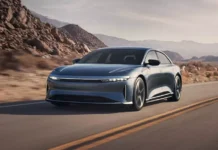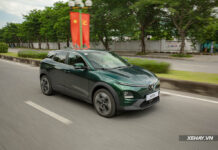The government’s issuance of Decree 73/2025 on March 31, with a reduction in import tax on cars from 13-14%, has raised expectations for a significant drop in prices of imported vehicles. However, the reality may not be that simple.
According to Decree 73, from March 31, imported cars with HS codes 8703.23.63 and 8703.23.57 will have their import tax reduced from 64% to 50%; imported cars with HS code 8703.24.51 will also be reduced from 45% to 32% to unify the tax rates for these three HS codes.
In Vietnam, there aren’t many car models that fall into these three groups, mainly luxury vehicles and a few large-sized models from mainstream brands. Thus, Decree 73 doesn’t significantly impact the overall Vietnamese automobile market since the number of models benefiting from the preferential import tax is quite limited, and they are mostly from the US, such as Jeep, Mercedes, and a few Lexus models imported from Japan.
Meanwhile, cars imported from Southeast Asian countries like Toyota Camry and Fortuner have already been enjoying 0% import tax since 2018 under the ATIGA Agreement. Therefore, this tax reduction doesn’t affect this group of vehicles. For cars imported from Japan, the import tax is currently at 45% according to CPTPP, but some models with engine displacements above 3 liters and all-wheel drive, such as Toyota Land Cruiser, Lexus GX, and LX, will benefit from the reduced import tax of 32% as per Decree 73.
In theory, when the import tax is lowered from 64% to 50%, the price of a car, after including special consumption tax and VAT, could decrease by approximately 8.6%. This implies that a car priced at 1 billion VND could become 86 million VND cheaper if all other factors remain constant. However, in reality, the price that consumers pay depends on various factors such as exchange rate fluctuations, transportation costs, marketing expenses, and the profit margins of the manufacturer and dealer.
If it’s the same model and the import timing isn’t too different, the car’s price may decrease when the import tax is lowered. Nevertheless, if the vehicle in question is an upgraded version or a newer generation with more features, the price may not decrease and could even increase.
Moreover, transportation costs significantly influence car prices. For instance, during the 2022-2023 period, the escalation of the Russia-Ukraine conflict caused a two-to-threefold increase in ocean freight rates from the US to Vietnam, resulting in a considerable rise in imported car prices.
Currently, imported vehicles are gaining a more substantial foothold in the Vietnamese automobile market. While imported car sales stood at 130,404 units in 2021, that figure rose to 171,571 in 2024, representing a growth rate of 34%, significantly outpacing the 12% increase of domestically assembled cars. This trend is mainly driven by the entry of more foreign automobile brands into Vietnam, with most of their cars being imported completely built units.
According to statistics from the Customs Department, about 77% of imported cars into Vietnam come primarily from Indonesia and Thailand, two countries with over 80% localization of automobile production and zero import tax.
While the immediate impact of Decree 73 on imported car prices isn’t substantial, in the long term, free trade agreements like CPTPP, EVFTA, and UKVFTA will lead to a gradual decrease in import taxes on cars from other countries. As per the roadmap, import taxes on completely built-up vehicles from multiple markets will decrease to 0% by 2029-2030. At that point, imported car prices will have the opportunity to drop significantly, creating more robust competition against domestically assembled vehicles.
TH (Tuoitrethudo)
The American Market’s Shift in Preference: Downsizing from Large Cars to Affordable, Compact Vehicles
Soaring gas prices and hefty monthly expenses have Americans seeking more affordable options. This shift in consumer behavior has led to a rising interest in smaller, more economical vehicles. The focus on cost-effective choices doesn’t mean a compromise on quality or features, but rather a smarter approach to car ownership.














































